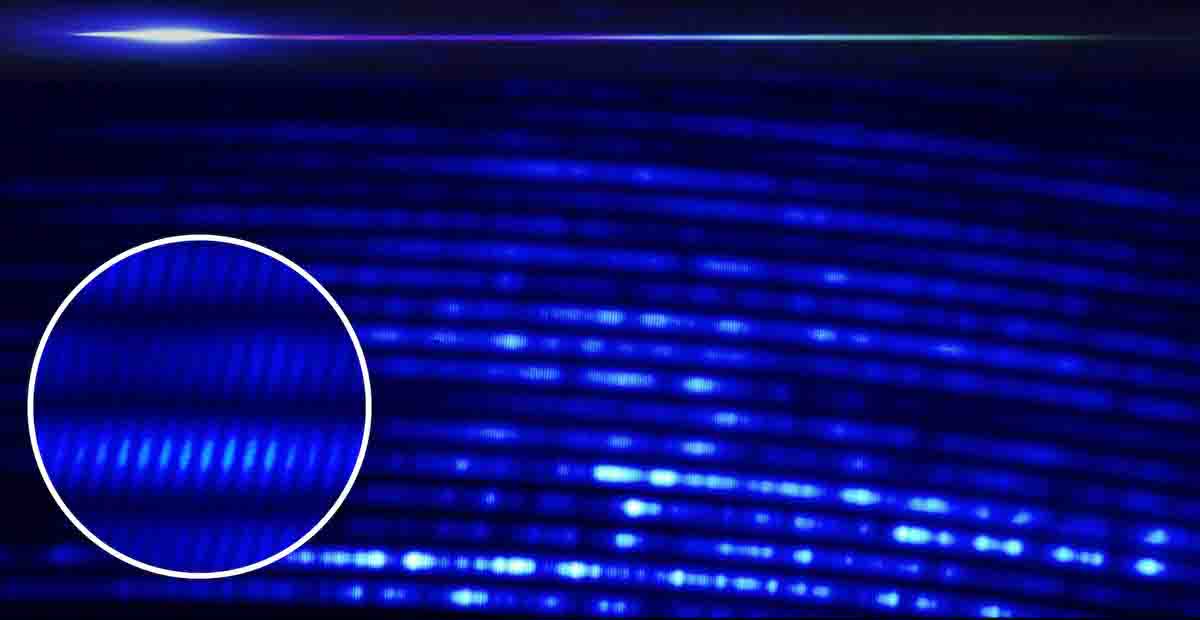Published:

Astronomers have gazed at the stars for centuries, but a breakthrough from physicists at Heriot-Watt University and the University of Cambridge could transform their view of starlight, and what it tells us about the universe.
The Heriot-Watt and Cambridge scientists developed a powerful new tool that will help astronomers find the telltale signs of hidden planets.
The technology could also improve our understanding of the universe by offering more sensitive measurements of how the universe is expanding.
The innovation is reported in the academic journal Nature Communications.
Blue-green breakthrough
The breakthrough hinges on the development of a laser system known as an astrocomb.
Dr Samantha Thompson, an astrophysics senior research associate at the University of Cambridge, said “This new astrocomb will enable astronomers to accurately study the spectrum of light from nearby stars in the hunt for Earth-like planets.
“When astronomers hunt for exoplanets with the Radial Velocity technique, they study the light from stars. Planets orbiting these stars cause the star to move, bringing about tiny changes in the colour of the starlight - if we can accurately measure those, we can discover and characterise new planets.
“For stars similar to our own Sun, most of this information is found in the blue-green part of the light spectrum, which we haven't had such precise calibration for until now.
“This is a really exciting development that will enable us to study smaller planets on longer orbits than ever before - with the aim of discovering the first 'Earth-like' planet orbiting around a nearby Sun-like star.”
Professor Derryck Reid from Heriot-Watt University explains: “Astrocombs allow astronomers to make extremely sensitive wavelength measurements of the spectrum of light, potentially tens to hundreds of times better than conventional technology.
“Much like the millimetre scale on a ruler lets us measure distances precisely, an astrocomb gives astronomers a precision scale for measuring wavelength.
“Until now, astrocombs operated mainly in the green-to-red part of the spectrum of light, but the shorter-wavelength ultraviolet to blue-green region is rich in the atomic absorption features of interest to astronomers.
“Our new approach for the first time provides a continuous sequence of optical markers from the ultraviolet to the blue/green that serve as a precision wavelength scale in this part of the spectrum.”
A rock ‘n’ roll amplifier - but for starlight
The team has finally cracked the ultraviolet to blue-green part of the spectrum and proved that their innovation could be used in the field by astronomers.
“This is the first astrocomb with continuous coverage from the ultraviolet to the blue-green spectrum.
“We achieved this by using special devices that exhibit so-called ‘nonlinear optical effects’, which can dramatically change the colour of a laser beam if its power is sufficiently high.
“A nice analogy is in rock music, where audio distortion (‘nonlinearity’) is heard when the signal from an electric guitar is high, but not when it is lower. That distortion is simply new audio frequencies being created in the guitar amplifier: our devices do the same thing, but for light.
“Importantly, we’ve achieved a wide and continuous spectrum of ultraviolet to blue-green colours using a laser with remarkably low power, and of the same kind already in use in some astronomical telescopes.”
Professor Reid’s team at Heriot-Watt is developing the technology for the Extremely Large Telescope, currently under construction in Chile. They also work with astronomers in Cambridge, Uppsala and Capetown on astrocombs for telescopes in the Canary Islands and South Africa.